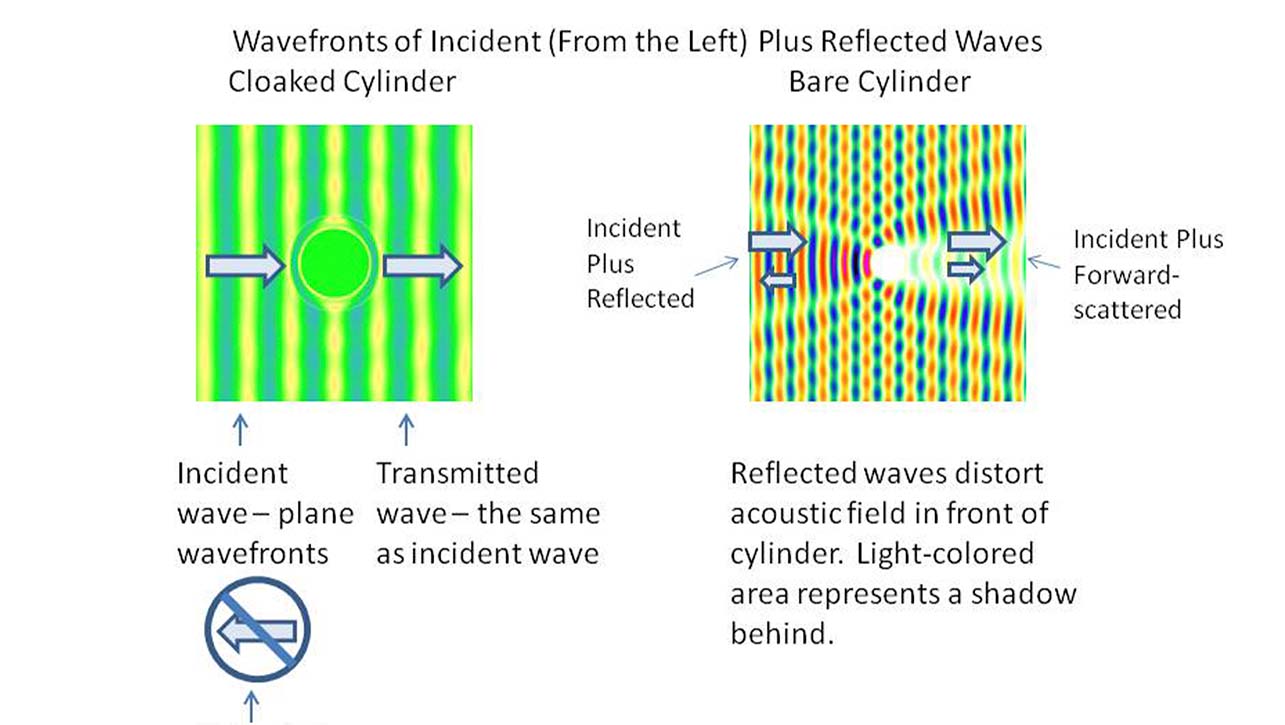Acentech completed a three year, $750,000 U.S. Navy research project, which sought to evaluate the possible application of metamaterials, especially those forming an acoustic cloak for underwater naval vehicles.
Metamaterials are materials with exotic properties not found in nature. A cloak is a layer surrounding an object that bends incident acoustic wavers around it, and reconstructs the incident waves on the opposite side. A cloaked object could thus be invisible to active sonar at any angle. There is rapidly growing scientific literature describing the theoretical aspects of cloaking, including analyses of what material properties were required, but it was unclear as to whether practical cloaks could be developed. This project involved analytical modeling, laboratory measurements, and working with other companies to fabricate proof of principle test items.
The first challenge in this program was to develop an understanding of cloaking theory, which required a study of existing literature and continued internal conversations to test and stimulate the evolution of our understanding. A key technical challenge was a requirement to generate effective dynamic mass densities in different directions, both much larger and much smaller than those of normal materials.
The designs we were developing theoretically called for infinitely large mass densities in the radial direction, and a major question was whether practical structures with physically realizable large but finite dynamic masses could provide good cloaking performance. These and other similar questions were addressed during the project. A resonance-based method was developed to provide extremely small effective mass densities in the tangential direction. It was determined that practical cloaks for small underwater objects (e.g. UUV’s), effective at search sonar frequencies, could be designed.
Designs that specified geometries and materials with requisite properties were developed. These included anisotropic spring/mass resonant elements employing polycarbonate springs and tungsten masses encased in very stiff carbon fiber shells. Samples of the anisotropic resonators and related structures were fabricated and evaluated in the Acentech laboratory. These were shown to have the desired properties although the precise details of the frequency responses differed from the theoretical expectations. Ultimately, however, this design concept was judged to be too complex, too difficult to fabricate and too expensive.
Once the difficulty of demonstrating the developed design was recognized, Acentech explored a non-resonant composite approach to achieve the same anisotropic wave-bearing properties. Designs for cloaks of this nature were developed, and further evaluation and testing of these designs was recommended as a next step in the Navy’s evaluation of the technology.
